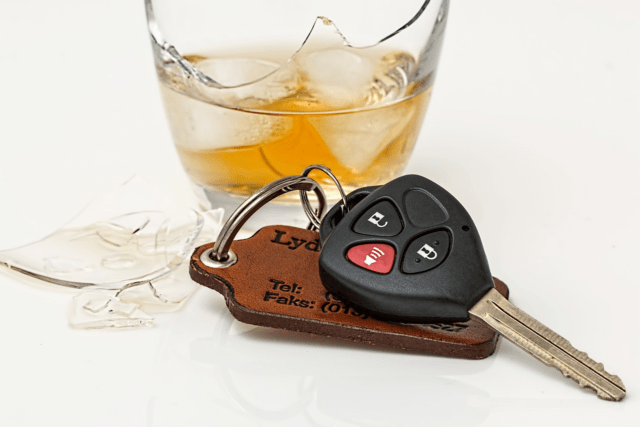
Driving While Intoxicated (DWI) is a serious offense that carries significant legal consequences. Understanding the intricacies of DWI law can be challenging, but with insights from a seasoned lawyer, the process becomes more transparent. This article aims to demystify DWI law, from the initial sobriety tests to the final sentencing, providing valuable information for those facing DWI charges.
The Initial Encounter: Traffic Stops and Sobriety Tests
When a law enforcement officer suspects a driver of being intoxicated, the process typically begins with a traffic stop. During this encounter, the officer may perform a series of sobriety tests to determine if the driver is under the influence of alcohol or drugs.
Field Sobriety Tests
Field Sobriety Tests (FSTs) are standardized physical and cognitive tasks designed to assess a driver’s level of impairment. The three most common FSTs include:
- Horizontal Gaze Nystagmus (HGN): This test measures the involuntary jerking of the eyes as they follow a moving object, which can be more pronounced in intoxicated individuals.
- Walk-and-Turn (WAT): The driver is asked to walk in a straight line, heel-to-toe, turn, and return in the same manner. This test evaluates balance, coordination, and the ability to follow instructions.
- One-Leg Stand (OLS): The driver must stand on one leg for about 30 seconds. This test assesses balance and attention.
Breathalyzer and Chemical Tests
If the officer has probable cause to believe the driver is intoxicated, they may administer a breathalyzer test. This device measures Blood Alcohol Concentration (BAC) by analyzing a breath sample. In many jurisdictions, a BAC of 0.08% or higher is considered legally impaired.
In some cases, the officer may request a blood or urine test to determine the presence of drugs or a more precise BAC measurement. Refusal to comply with these tests can result in immediate license suspension and other penalties under implied consent laws.
Legal Proceedings: From Arrest to Arraignment
Once a driver is arrested for DWI, the legal process begins. Understanding each step can help mitigate anxiety and prepare for what lies ahead.
The Arrest
During the arrest, the officer will typically read the driver their Miranda rights, informing them of their right to remain silent and the right to an attorney. It’s crucial for the driver to exercise these rights and avoid making any statements that could be used against them in court.
Booking and Bail
After the arrest, the driver is taken to the police station for booking. This process involves recording personal information, taking fingerprints and photographs, and possibly conducting a brief interview. Depending on the severity of the offense and the driver’s criminal history, bail may be set to secure their release until the court date.
Arraignment
The arraignment is the first formal court appearance where the driver hears the charges against them and enters a plea of guilty, not guilty, or no contest. It’s advisable to have a DWI lawyer from RB Isenberg present at this stage to provide guidance and ensure the driver’s rights are protected.
Building a Defense: Legal Strategies in DWI Cases
A seasoned lawyer can employ various strategies to build a strong defense against DWI charges. These strategies aim to challenge the prosecution’s evidence and highlight any procedural errors that may have occurred during the arrest and testing process.
Challenging the Traffic Stop
One common defense strategy is to question the legality of the initial traffic stop. If the officer lacked probable cause or violated the driver’s constitutional rights, any evidence obtained during the stop may be deemed inadmissible in court.
Questioning Sobriety Test Results
Field Sobriety Tests and breathalyzer results are not infallible. Factors such as medical conditions, environmental conditions, and improper administration of the tests can all impact the accuracy of the results. An experienced lawyer can scrutinize these tests to identify potential flaws.
Investigating Chemical Test Procedures
Chemical tests must be conducted according to strict protocols to ensure accuracy. A lawyer can examine whether the tests were performed correctly, whether the equipment was properly calibrated, and whether the samples were handled appropriately.
The Trial: Presenting the Case
If the case goes to trial, both the prosecution and defense will present their arguments, call witnesses, and submit evidence. The goal of the defense is to create reasonable doubt about the driver’s guilt.
Jury Selection
Jury selection is a critical phase of the trial process. The defense and prosecution will question potential jurors to identify any biases or preconceived notions that may affect their judgment. An experienced lawyer will aim to select jurors who are open-minded and impartial.
Opening Statements and Witness Testimony
The trial begins with opening statements from both sides, outlining their respective cases. The prosecution will then present evidence and call witnesses, such as the arresting officer and forensic experts. The defense will have the opportunity to cross-examine these witnesses to challenge their credibility and the validity of their testimony.
Closing Arguments and Verdict
After all evidence has been presented, both sides will deliver closing arguments, summarizing their cases and urging the jury to render a verdict in their favor. The jury will then deliberate and reach a verdict of guilty or not guilty. If the driver is acquitted, they are free to go. If found guilty, the case proceeds to sentencing.
Sentencing: Consequences of a DWI Conviction
The penalties for a DWI conviction vary depending on several factors, including the driver’s BAC level, prior DWI offenses, and whether any aggravating circumstances were present, such as causing an accident or having a minor in the vehicle.
Common Penalties
Common penalties for a DWI conviction may include:
- Fines: Monetary fines can range from a few hundred to several thousand dollars.
- License Suspension: The driver’s license may be suspended for a period ranging from a few months to several years.
- Imprisonment: Jail time can range from a few days to several years, depending on the severity of the offense.
- Probation: The driver may be placed on probation, requiring them to comply with specific conditions, such as attending alcohol education programs.
- Ignition Interlock Device (IID): In some cases, the driver may be required to install an IID in their vehicle, which prevents the car from starting if alcohol is detected on their breath.
Long-Term Consequences
Beyond the immediate penalties, a DWI conviction can have long-term consequences, including increased insurance premiums, loss of employment opportunities, and a permanent criminal record. These ramifications highlight the importance of securing experienced legal representation to minimize the impact of a DWI charge.
Conclusion
Navigating the complexities of DWI law requires expertise and a thorough understanding of legal procedures. From the initial traffic stop and sobriety tests to the trial and sentencing, every step of the process involves critical decisions that can significantly affect the outcome of a case. Consulting with a seasoned lawyer ensures that individuals facing DWI charges receive the best possible defense and guidance throughout this challenging journey.
About the Author:











